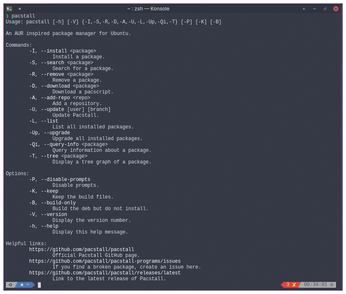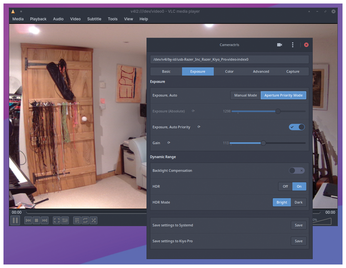FOSSPicks
Pacstall
Arch Linux has transformed the Linux distribution landscape and has single handedly made minimal distributions cool again. It did this without oversimplifying the installation process or by making assumptions about what most users may need. In a world of easy installations and live distribution testing, Arch put the onus on the user, helped hugely by the wonderful Arch wiki. Arch Linux has since thrived and become default on Valve's Steam Deck and spawned a few derivatives. But one of the best things still about Arch is the Arch User Repository (AUR). This is a very Arch-like take on third-party packaging, again putting the responsibility on the user by asking them to check over the packages they install. Consequently, AUR packages are easy to audit and are incredibly diverse, and the AUR is often the first place to look for new software packages. Which is why the AUR is also central to writing these very pages, because it helps us test everything we write about.
Pacstall is a project that attempts to bring the convenience and diversity you find in the AUR to Ubuntu. It doesn't use the AUR itself, but it does aggregate lots of different package formats, including binary, Git, AppImage, and deb, and lets you build packages manually, just like makepkg with Arch. In this way, you always get the latest version available from Git or even build packages from forks or branches. The command line syntax will also feel familiar, with packages installed via pacstall -I followed by the package name. There aren't too many packages currently, but they do include complex open source and proprietary packages, including Android Studio, Bitwig, and Bitwarden. More important, however, the packages are created much like AUR packages, with a simple descriptive script that's easily accessible and easily reproducible locally. Not only does this mean you can be sure of what you're really getting, you can also create your own packages with very little difficulty.
Project Website
https://github.com/pacstall/pacstall

Webcam controls
Cameractrls
For years, many of us were perfectly content to use our perfectly poor webcams for video meetings and idle video chat. This was probably because you could still physically meet up with the people, so your memories of them wouldn't be tainted by the crude color and noise of cheap sensors. Things have changed, and so too have our webcams. The latest models have much better sensors, much less noise, and are capable of resolutions such as 4K at 60 frames per second. Thanks to the V4L2 standard, the majority of these webcams will just work on Linux, but you can't typically configure them to the full extent of their capabilities because their manufacturers usually hide those options within their Windows-only applications.
Enter cameractrls to the rescue. Cameractrls exposes all the options supported by V4L2 and adds to these many of the secret options provided by Logitech, Brio, and Razor Kiyo webcams in their Windows drivers. These options can be configured either through the command line, just as you might with v4l2-ctl, or through the bundled GTK and Tk GUI front ends. These two are particularly good because they allow you to configure your webcam graphically while you're using the camera, so you can easily open these and tweak your settings while you're in a video meeting, for example. There's even an option to open the video stream so you can set up a configuration and save it before getting into a call. Most importantly, it is the only way to set those out-of-standard webcam specific features, such as pan and tilt, zoom, autofocus, and HDR settings, which might otherwise be out of reach without a Windows installation. You can then save those settings to the camera itself, or if your camera can't save everything, directly to systemd so they can be restored easily next time the camera is connected.
Project Website
https://github.com/soyersoyer/cameractrls

Buy this article as PDF
(incl. VAT)
